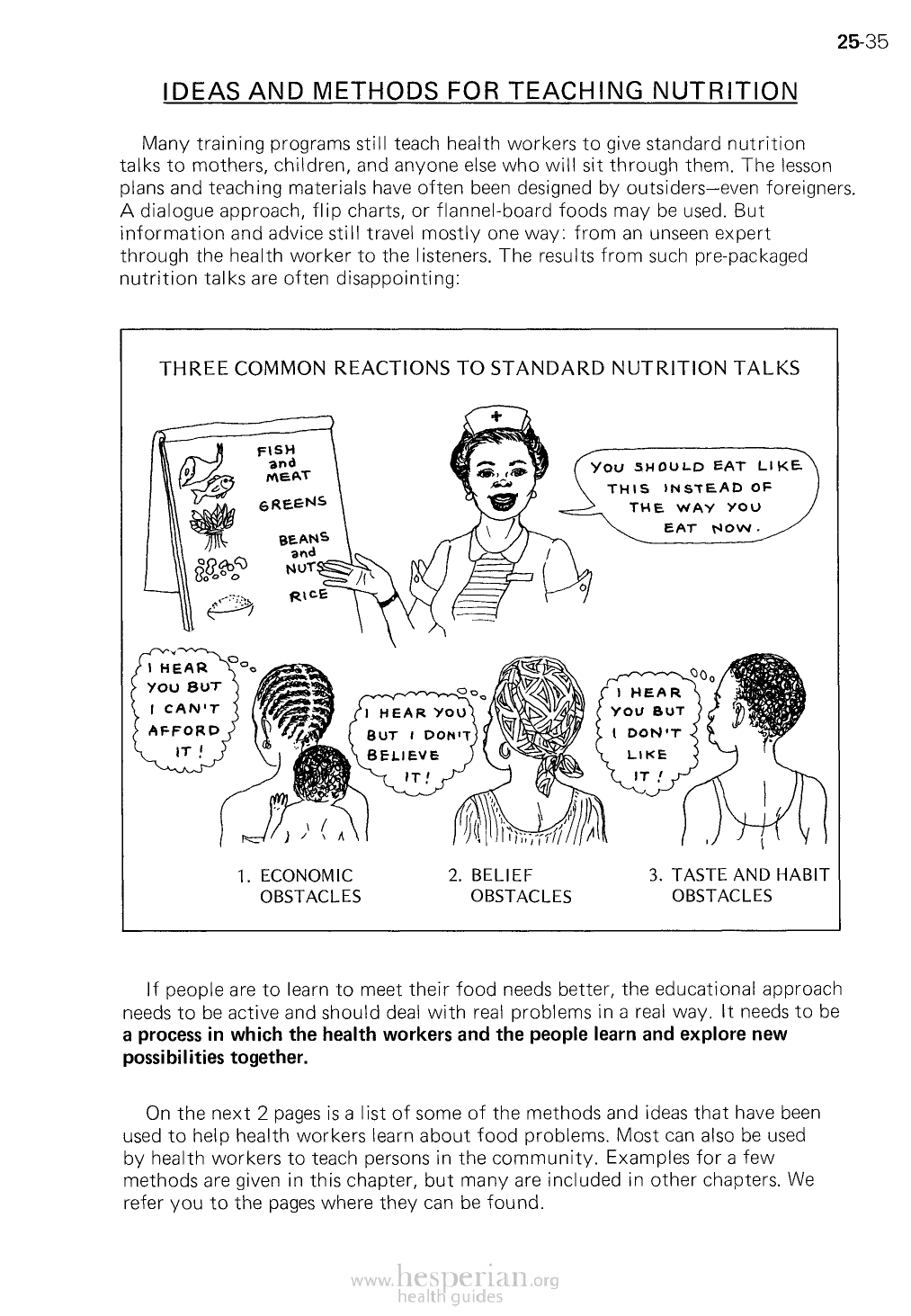
25-35
IDEAS AND METHODS FOR TEACHING NUTRITION
Many training programs stilt teach health workers to give standard nutrition talks
to mothers, children, and anyone else who will sit through them. The lesson plans
and teaching materials have often been designed by outsiders—even foreigners. A
dialogue approach, flip charts, or flannel-board foods may be used. But information
and advice still travel mostly one way: from an unseen expert through the health
worker to the listeners. The results from such pre-packaged nutrition talks are often
disappointing:
THREE COMMON REACTIONS TO STANDARD NUTRITION TALKS
1. ECONOMIC
OBSTACLES
2. BELIEF
OBSTACLES
3. TASTE AND HABIT
OBSTACLES
If people are to learn to meet their food needs better, the educational approach
needs to be active and should deal with real problems in a real way. It needs to be
a process in which the health workers and the people learn and explore new
possibilities together.
On the next 2 pages is a list of some of the methods and ideas that have been
used to help health workers learn about food problems. Most can also be used by
health workers to teach persons in the community. Examples for a few methods
are given in this chapter, but many are included in other chapters. We refer you to
the pages where they can be found.